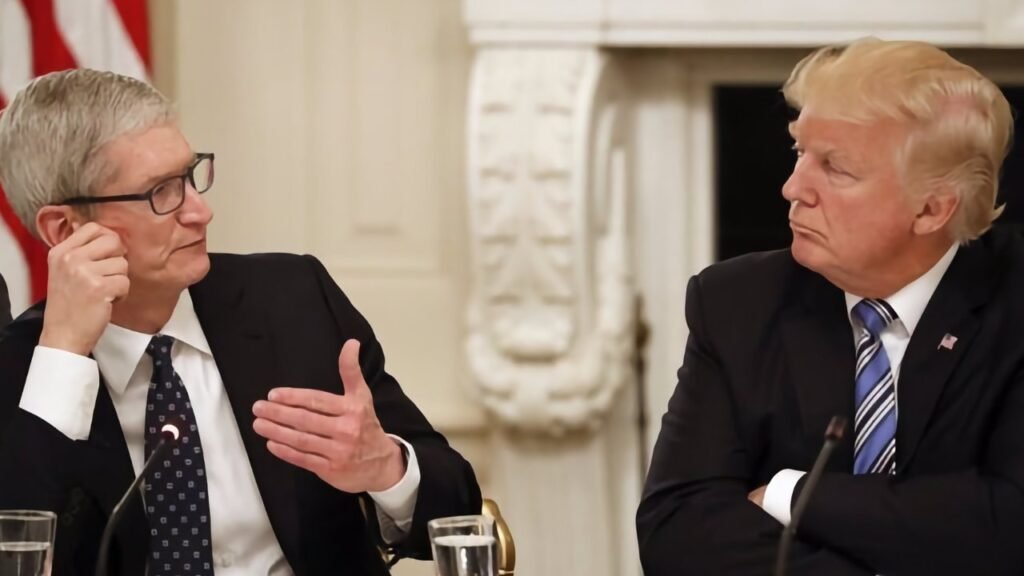Apple’s stock took a significant hit following the announcement of new tariffs, triggering a sharp sell-off in after-hours trading. When markets officially opened the next day, the situation worsened, with shares continuing to drop at an alarming rate.

The tariffs, introduced by President Trump, impact every country that supplies Apple with components, dramatically increasing costs. This has fueled concerns that Apple may have no choice but to raise prices, a scenario that immediately unsettled investors. As a result, the entire tech sector saw heavy selling activity, but Apple was hit the hardest, with its stock plummeting by 7.5% in extended trading.
As markets resumed normal trading, all eyes were on Apple to see if it could stabilize. Initially, it appeared the decline had leveled off, but within minutes, the stock dropped further, losing over 9% of its value. By 9:50 A.M. Eastern, Apple shares had fallen by 9.28% since the previous day’s close.
During his speech, Trump mentioned Apple specifically, highlighting the company’s $500 billion investment in the U.S. as a success of his policies. However, industry analysts argue that Apple’s investment was already in motion and was simply repackaged as a political win. Furthermore, the idea that tariffs will bring Apple’s manufacturing back to the U.S. is widely disputed, as China continues to play an essential role in the company’s supply chain.
For years, Apple and its suppliers have been attempting to reduce reliance on Chinese manufacturing, but shifting production entirely remains unlikely. CEO Tim Cook has previously stated that China’s dominance is no longer about low labor costs but about highly specialized skills in manufacturing. As early as 2012, Cook admitted that finding enough skilled workers in the U.S. to match China’s production capacity would be extremely difficult.
While Apple’s stock remains under pressure, investors are watching closely to see if the company can recover from this sharp downturn or if continued uncertainty will further impact its market position.

















